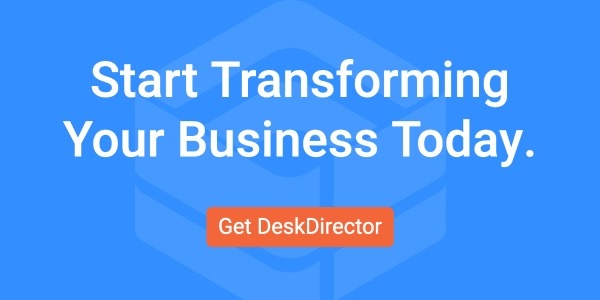As businesses race to innovate in a digital-first world, the divide between IT and other departments is more than just an inconvenience—it's a roadblock to progress. When IT and business teams operate in isolation, it can undermine productivity and hinder an organization's ability to compete effectively in today's fast-paced marketplace.
Many organizations struggle with silos between IT and business teams, causing friction that impacts everything from project delivery to customer experience. However, this challenge isn't insurmountable. With the right strategies and tools, IT leadership can bridge the gap, fostering a culture of collaboration that drives enterprise-wide success.
In this blog, we'll explore why IT-business alignment is crucial, how an ITSM strategy can act as the backbone of collaboration, and actionable steps IT leadership can take to build stronger partnerships with business units.
.webp?width=600&height=600&name=ESM%20(2).webp)
Why IT-Business Collaboration is Crucial
The modern enterprise is too interconnected for its departments to work in isolation. When IT and business teams operate in silos, it creates a cascade of adverse effects. Productivity stalls, innovation slows, and customer outcomes suffer. 70% of digital transformation efforts fail, and misaligned priorities and poor communication are among the leading causes of these failed initiatives.
On the other hand, aligned teams are more agile, enabling organizations to respond quickly to market shifts and emerging opportunities. For example, when IT understands business goals, it can deliver solutions that enhance customer experience, streamline operations, and generate revenue. Simply put, IT-business collaboration isn't just a "nice to have"—it's critical for staying competitive in today's fast-paced environment.
The Role of ITSM Strategy in Breaking Down Silos
An ITSM (IT Service Management) strategy serves as a vital framework for uniting IT and business teams. ITSM provides the processes, tools, and best practices necessary to deliver IT services that align with business needs, enabling transparency and consistency across the organization.
Key ITSM frameworks, such as ITIL (Information Technology Infrastructure Library), are designed to foster collaboration by emphasizing service delivery, accountability, and continuous improvement. For instance, an incident management process ensures that IT and business units work together to resolve service interruptions quickly, minimizing downtime.
ITSM also helps to bridge the communication gap by providing clear, shared workflows. Whether it's a service catalog that makes IT offerings more accessible to business users or automated reporting tools that track performance against agreed-upon metrics, ITSM gives both teams the language and structure they need to collaborate effectively.
Strategies for Fostering Collaboration Between IT and Business Teams
While ITSM provides a strong foundation, it's just one part of the equation. IT leadership must adopt additional strategies to foster meaningful collaboration:
1. Understand Business Goals
IT cannot operate in a vacuum. Leadership must prioritize building relationships with business stakeholders to deeply understand their objectives and pain points. When IT teams align their work with broader organizational goals—such as improving customer retention or accelerating time-to-market—they become true partners rather than mere service providers.
2. Establish a Communication Cadence
Regular communication is essential for breaking down silos. Cross-functional meetings, business relationship managers, and feedback loops create opportunities for IT and business teams to share updates, resolve misunderstandings, and celebrate shared successes.
3. Define Shared Metrics and Success Criteria
Collaboration is easier when everyone is working toward the same outcomes. IT and business teams should define joint KPIs that reflect mutual success, such as customer satisfaction scores, Net Promoter Score (NPS), or time-to-market metrics. Shared accountability helps align efforts and fosters a sense of teamwork.
4. Empower Business Teams with Self-Service Tools
One of the biggest sources of friction between IT and business teams is bottlenecks in service delivery. Empowering business units with self-service portals allows them to access IT resources, request support, and resolve issues independently, freeing IT to focus on more strategic initiatives.
The Role of Technology in Closing the Gap
Technology is the enabler of collaboration. The right ITSM platform can serve as the central hub where IT and business teams connect, communicate, and collaborate. Features such as centralized service catalogs, customizable workflows, and advanced automation simplify interactions and make processes more efficient.
For example, a centralized service catalog can provide business teams with visibility into available IT services, empowering them to request resources without unnecessary back-and-forth. Similarly, automation can streamline repetitive tasks, such as ticket routing or approval workflows, reducing friction and improving overall efficiency.
The key is to select a solution that's intuitive, flexible, and scalable to your organization's unique needs. When technology acts as a bridge rather than a barrier, it becomes much easier to close the gap between IT and business teams.
ITSM Strategies for De-Siloing Your Business: The Conclusion
Closing the gap between IT and business teams is not a one-time initiative—it's an ongoing effort that requires strategic leadership, clear communication, and the right tools. By implementing a robust ITSM strategy, fostering collaboration through shared goals, and leveraging technology to streamline processes, organizations can break down silos and unlock the full potential of their teams.
Ready to bridge the gap between IT and business in your organization? Schedule a demo today to see how DeskDirector can revolutionize your ITSM strategy and drive enterprise-wide collaboration.







